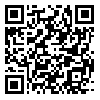Volume 20, Issue 23 (9-2022)
RSMT 2022, 20(23): 41-55 |
Back to browse issues page
Download citation:
BibTeX | RIS | EndNote | Medlars | ProCite | Reference Manager | RefWorks
Send citation to:



BibTeX | RIS | EndNote | Medlars | ProCite | Reference Manager | RefWorks
Send citation to:
Zarei M, Dalvandpour N, Hoseini A. Determining the Internal consistency of the Functional Movement Screen test in students. RSMT 2022; 20 (23) :41-55
URL: http://jsmt.khu.ac.ir/article-1-498-en.html
URL: http://jsmt.khu.ac.ir/article-1-498-en.html
Shahid Beheshti University , nazanin.dalvandpooor@yahoo.com
Abstract: (4751 Views)
Functional Movement Screen Test is one of the tests used to identify asymmetries and limitations in basic and fundamental movements. For time management and fast execution of this test, some researchers have suggested reducing the number of tests. The purpose of the present study was to investigate the internal consistency and correlation between components of this test. The present study was a correlational study. In this study, movement screen test was performed on 165 male and female students aged 18 to 25 years of Shahid Beheshti University using a special FMS kit. Results: The internal consistency of the test, measured by Cronbach's alpha method, was acceptable (α=0.71). The results of multivariate regression test showed that there was a low to medium correlation between the internal components of the test, but a high correlation was observed between the test components and the final FMS score. The results also showed a high correlation between the "four small movements" (Active leg raising, shoulder mobility, stability push up and rotary stability) and the total FMS score and a low correlation between the "three big movements" and the FMS score. Motor function screen test is a valid tool for evaluating motor performance. The results also show that in large communities such as students, and if there is a time limit, "four small movements" can be used instead of seven.
Type of Study: Research |
Subject:
آسیب شناسی و حرکات اصلاحی
Received: 2021/08/13 | Accepted: 2021/12/31 | Published: 2021/12/31
Received: 2021/08/13 | Accepted: 2021/12/31 | Published: 2021/12/31
Send email to the article author
| Rights and permissions | |
 |
This work is licensed under a Creative Commons Attribution-NonCommercial 4.0 International License. |






